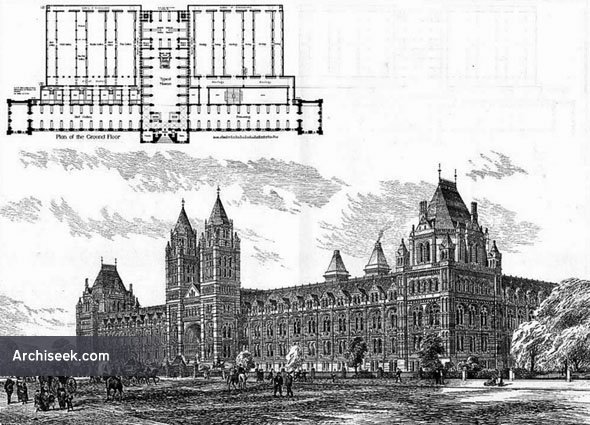Random Building
1880 – Natural History Museum, Kensington, London

Previously a section of the British Museum, Richard Owen, who was appointed Superintendent of the collection in 1856 wanted to expand the museum. Land in South Kensington was purchased, and in 1864 a competition was held to design the new museum. The winning entry was submitted by Captain Francis Fowke who died shortly afterwards. The scheme was taken over by Alfred Waterhouse who substantially revised the agreed plans, and designed the façades in his own Romanesque style. The original plans included wings on either side of the main building, but these plans were soon abandoned for budgetary reasons.
Work began in 1873 and was completed in 1880. The new museum opened in 1881, although the move from the old museum was not fully completed until 1883.
Both the interiors and exteriors of the Waterhouse building make extensive use of terracotta tiles manufactured by the Tamworth-based company of Gibbs and Canning Limited. The tiles and bricks feature many relief sculptures of flora and fauna, with living and extinct species featured within the west and east wings respectively. This explicit separation was at the request of Owen, and has been seen as a statement of his contemporary rebuttal of Darwin’s attempt to link present species with past through the theory of natural selection.
The central axis of the museum is aligned with the tower of Imperial College London, the Royal Albert Hall and Albert Memorial further north. These all form part of the complex known colloquially as Albertopolis.












